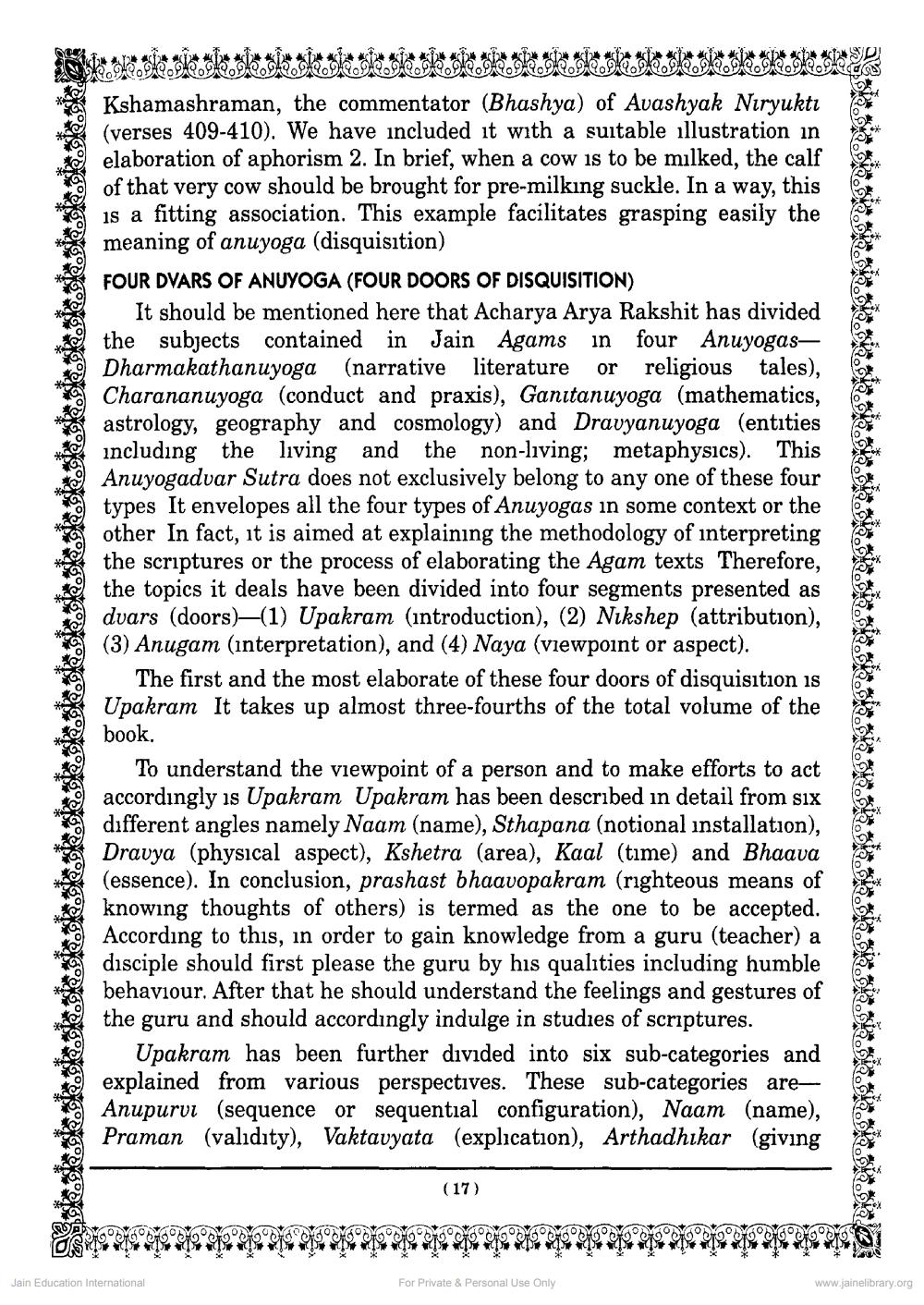________________
Kshamashraman, the commentator (Bhashya) of Avashyak Niryuktı (verses 409-410). We have included it with a suitable illustration in elaboration of aphorism 2. In brief, when a cow is to be milked, the calf of that very cow should be brought for pre-milking suckle. In a way, this
is a fitting association. This example facilitates grasping easily the * meaning of anuyoga (disquisition) TELEFOUR DVARS OF ANUYOGA (FOUR DOORS OF DISQUISITION)
It should be mentioned here that Acharya Arya Rakshit has divided the subjects contained in Jain Agams in four AnuyogasDharmakathanuyoga (narrative literature or religious tales), Charananuyoga (conduct and praxis), Ganıtanuyoga (mathematics, astrology, geography and cosmology) and Dravyanuyoga (entities including the living and the non-living; metaphysics). This Anuyogadvar Sutra does not exclusively belong to any one of these four types It envelopes all the four types of Anuyogas in some context or the other In fact, it is aimed at explaining the methodology of interpreting the scriptures or the process of elaborating the Agam texts Therefore, the topics it deals have been divided into four segments presented as dvars (doors)—(1) Upakram (introduction), (2) Nikshep (attribution), (3) Anugam (interpretation), and (4) Naya (viewpoint or aspect).
The first and the most elaborate of these four doors of disquisition is * Upakram It takes up almost three-fourths of the total volume of the book.
To understand the viewpoint of a person and to make efforts to act accordingly is Upakram Upakram has been described in detail from six different angles namely Naam (name), Sthapana (notional installation), Dravya (physical aspect), Kshetra (area), Kaal (time) and Bhaava (essence). In conclusion, prashast bhaavopakram (righteous means of knowing thoughts of others) is termed as the one to be accepted. According to this, in order to gain knowledge from a guru (teacher) a disciple should first please the guru by his qualities including humble behaviour. After that he should understand the feelings and gestures of the guru and should accordingly indulge in studies of scriptures.
Upakram has been further divided into six sub-categories and explained from various perspectives. These sub-categories are Anupurvi (sequence or sequential configuration), Naam (name), Praman (valıdıty), Vaktavyata (explication), Arthadhikar (giving
(17)
Jain Education International
For Private & Personal Use Only
www.jainelibrary.org




